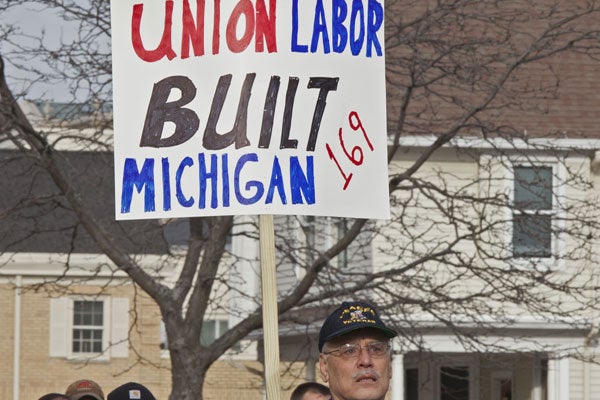All signs now point toward Michigan becoming America’s 24th right-to-work state by year’s end. This is good news for Michigan’s union members and unemployed.
Michigan has suffered more than most states in the recession. The state still has an unemployment rate one-and-a-half percentage points above the national average. The state needs to do everything it can to attract new companies—and jobs. Right-to-work would do just that.
Union contracts typically require employees to pay union dues or get fired. Such dues average between $600 and $900 a year. Polls show that a quarter of Michigan’s government employees would opt out if they could. Right-to-work laws give workers that freedom. They prohibit unions from making dues mandatory.
Unions fervently oppose right-to-work laws, because voluntary membership would cost them a lot of money. They will lose upward of $100 million if a quarter of their 700,000 Michigan members stop paying dues.
Right-to-work laws also help the unemployed by making states much more attractive for businesses. Unionized firms earn lower profits, invest less, and create fewer jobs than comparable non-union firms. Businesses want to know that they can avoid union attention as long as they treat their employees well.
Right-to-work laws make that likely. Voluntary membership reduces the financial benefits to unions of organizing companies with satisfied workers. Even if a union succeeds in organizing a company, it cannot force workers to pay dues. Of course, workers who feel mistreated have the right to unionize. But right-to-work laws encourage union organizers to restrict their attention to such unhappy workplaces: States see the number of union organizing drives fall in half after they pass right-to-work laws.
It was no accident that foreign automobile brands located their U.S. plants primarily in right-to-work states such as Alabama, Mississippi, and Tennessee—and not in Michigan. The share of manufacturing jobs rises between one-fifth and one-third when you cross the border into a right-to-work state.
Additional business investment usually raises the demand for labor, increasing wages. Unions argue that businesses will cut wages if the risk of unionizing falls. These two factors appear to cancel each other out. Most studies find that right-to-work laws have little effect on wages in either direction. Right-to-work states do have lower average wages, but this is because they are located primarily in areas with lower costs of living. Controlling for cost of living removes the apparent negative relationship.
The at-one-time unthinkable may soon become reality: Michigan may become a right-to-work state. And for Michigan’s union members and unemployed, that is cause for thanksgiving.






























